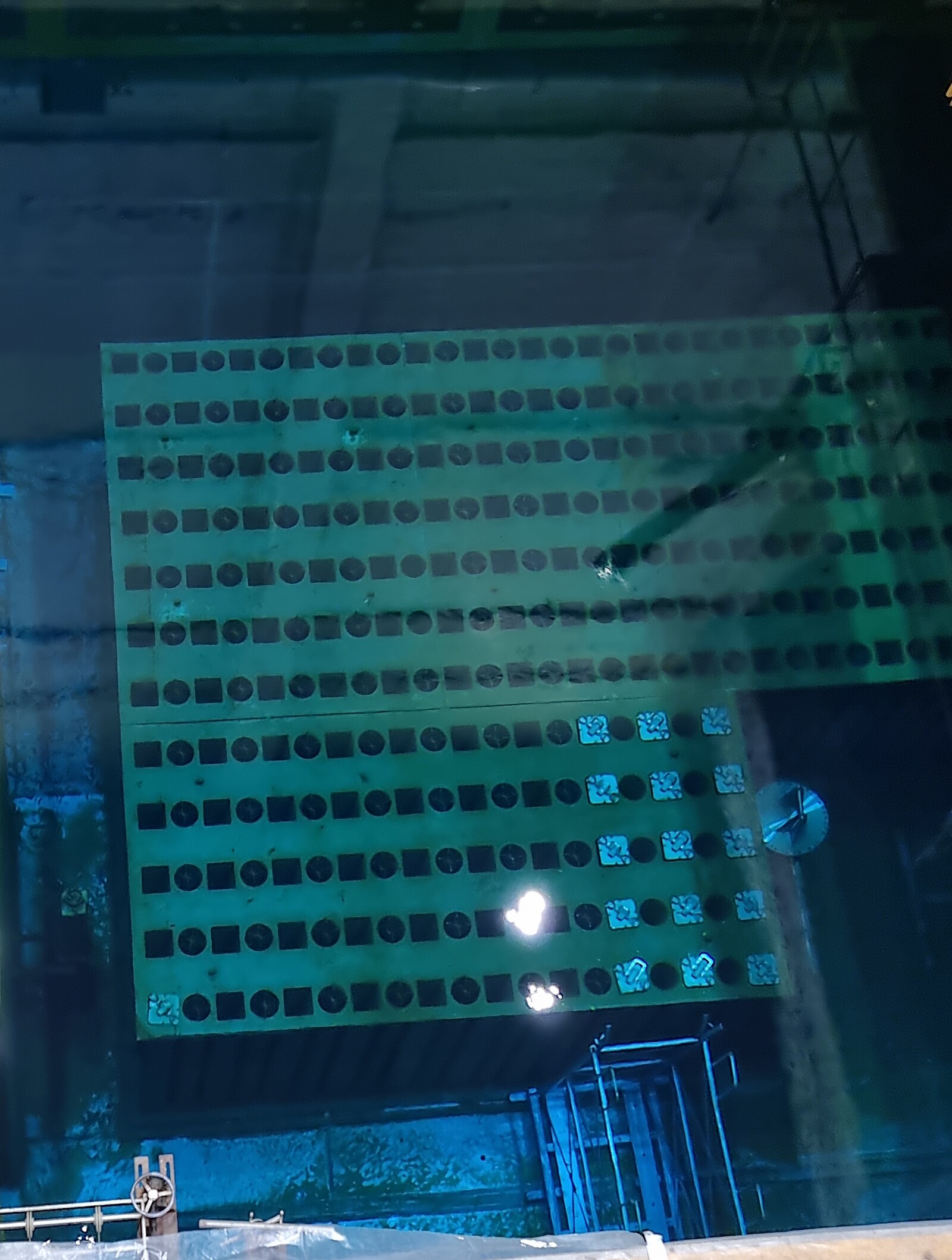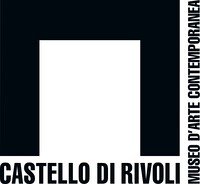A 21st-century meeting of artists, scientists, and philosophers
September 23, 2023, 10am
Piazza Mafalda di Savoia
10098 Rivoli Turin
Italy
Hours: Wednesday–Friday 10am–5pm,
Saturday–Sunday 11am–6pm
T +39 011 956 5222
The conference is jointly drafted by Carolyn Christov-Bakargiev, Director of Castello di Rivoli, and the artist Agnieszka Kurant.
Session I and II, 10am to 12pm and 2pm to 4pm, are open to the public, take place in the Castello di Rivoli Theater, and will be live streamed in the official YouTube channel of the Museum.
Session III, 5pm to 7pm, is a closed-door brainstorming meeting at newcleo, Turin.
The question of energy is among the most vital for the future of humanity and the multispecies flourishing of non-human and human life on earth. Castello di Rivoli Museo d’Arte Contemporanea presents a multi-disciplinary conference of art, science and philosophy entitled “Energy cultures. Energies, imaginaries, currencies, and nuclear horizons of the planet” to address the contradictions and unleash the disruptive and transformative properties of the energy flowing through artworks and scientific innovations. In an attempt to explore potential scenarios of energetic interspecies co-evolution, the conference investigates living matter at the scale of its atoms, their entanglement, communication, and interaction, attempting to challenge the static postulates and imagined futures of energy. The conference, which will be held on September 23, will bring artists, writers, scientists, philosophers, and architects together for a morning session open to the public in the Theater of the Museum. In the afternoon, they will continue their discussions in a private brainstorming session and meeting of minds at newcleo, a startup based in Turin that promotes an innovative approach to nuclear energy.
“newcleo supports and is co-hosting this event with Castello di Rivoli,” states Director Carolyn Christov-Bakargiev, “as part of their outreach activities on nuclear energy, which is seen as an integral part of our future. I have been wondering for some time now why clean nuclear energy – micro fission reactors using nuclear waste as fuel and liquid lead as a coolant – is not discussed much in the arts, even though it offers quite a promise of radically changing the status of climate change. We will put the undecided and the enthusiasts together and produce a chemical reaction – unleashing quite a bit of psychic energy in the room.”
Energy has shaped life on earth, civilizations and societies throughout history, from the pre-human photosynthetic conversion of solar power into plant biomass, passing through the human-induced CO2-producing carbon fossil fuel including coal, gas, and oil, to hydroelectricity achieved through damming, up to the “very human” mid-20th century use of atomic energy through nuclear fission (the process by which neutrons released from atoms boil water used to generate electricity in turbines). Energy “makes the world go round.” Indeed, it has been a subject of human investigation in the Global North and the Global South and in the indigenous worlds forever. The Greek term ἐνέργεια (energeia), adopted for the first time by Aristotle, derives from the earlier use of the term ἔργον (ergon) meaning “active, working,” preceded by en- which means “at” or “towards”. It was first used by Heraclitus and other pre-Socratic philosophers to connote fire as the primary source of action and the fundamental element of all life on Gaia, or earth.
Energy is a universal currency, made of a swirling of animal, vegetal, and physical forces. Nonetheless, the current forms of human energy production and consumption are leading to world destruction. Clean energy is the foundation on which our future should rest, but clean electricity still abundantly depends on storage and lithium-ion batteries, which might soon be complemented by sodium ion batteries. How can we cope with the storage of energy? What about the excess of unexploited energy, which accumulates as heat? How can we transmit it or make it become life for other bodies? In the massive-scale stockpiling of energy, essential for our technological devices, can we turn to plants as ‘hyperaccumulators’ and to practices such as agromining or phytomining to reduce greenhouse gas and water pollution, which are byproducts of mineral extraction? As suggested by philosopher Emanuele Coccia, what seems to happen nowadays is a shift of paradigms from the classic thermodynamic system – where the issue at stake is maintaining an equilibrium – to an alchemical one – where any living and non-living being is potentially able to store, release, and multiply the energy received. The contemporary political economy could be described as total cybernetics, based on perpetual transformations of energy as currency into information and into capital, while social energies, mined like oil and gas with algorithms, become part of the global energy market.
“The current abandonment of fossil fuel energies and their gradual replacement by renewable energies,” says artist Agnieszka Kurant, “interestingly coincides with the dematerialization of money and its partial substitution with digital currencies, the production of which is mostly dependent on energy. Traditional mining of fossil fuels and minerals is currently accompanied by the mining of cryptocurrencies on the blockchain—one of which was notably named ‘gas’. What is essential in the production of a crypto currency – a digital current generated through computers solving mathematical problems – is the energy to power the computer. Human labor is still indispensable here and performed by exploited workers at various mines, extracting the rare earth metals powering computers, but due to its reliance on energy, the production of capital through crypto-currency mining has become a race for the cheapest sources to power server farms. Such energy-intensive extractivist capital production in the Global North has environmental repercussions in the countries of the Global South.”
In the rampant drive to extract the last drop of energy from everything and everyone, new forms of slavery have developed. As the global climate crisis forces us to decarbonize and wean ourselves off fossil-fuels, what are the clean energy solutions to mitigate climate change? We have increased more ecological and sustainable water, wind, and sun-based energy production. Counter-intuitively, recent research points also to new forms of nuclear energy produced using nuclear waste as fuel thus ridding the planet of radioactive waste. Researchers in the field argue that nuclear fission might co-support the future of clean energy systems globally. Yet, even if nuclear energy has been statistically less impactful on the environment than fossil fuels, the fear of nuclear accidents continues to be the main consideration when discussing this matter in science, humanities, and in art. Can this be caused by the association with weaponized nuclear energy through the continuous bomb testing, which devastated both the environment and communities in places where atomic bomb tests have been frequent since the 1950s?
As the physical and psychic memory of radioactive waste is currently counterbalanced by the ecological pressure of a nuclear transition against climate collapse, it is time to reinvent our usage of energy to serve sustainable development. Theorists posit that bioremediation – a branch of biotechnology that employs the use of living organisms, such as microbes and bacteria, in the removal of contaminants and toxins from soil, water, and other environments – is currently being set up as an ecological and economic alternative to traditional procedures of removal of radioactive waste. It has been discovered that certain bacteria have the ability to interact with and absorb radioactive substances, thereby potentially aiding in the cleanup and remediation of contaminated sites.
“Seventy years of experience in operations of nuclear reactors” states Stefano Buono, founder of newcleo, “have now proven that it is even possible to employ the radioactive nuclear waste already existing from decommissioned nuclear fuel or bombs to produce nuclear energy for hundreds of years without extracting any further minerals such as uranium from the earth and do this at competitive costs. A nuclear reaction provides 1 million times more energy than any chemical reactions, and finding ways of using this energy can provide what is needed for the generations to come without impacting our planet producing carbon dioxide which causes global warming.”
But how to negotiate and transform the longstanding dread of nuclear contamination – vividly feeding into the scenarios of science fiction, nuclear disarmament movements and art movements such as Arte nucleare since the second half of the 20th century – nowadays magnified by the reiteration of war threats? Founded by the Italian artist Enrico Baj together with Sergio Dangelo and Gianni Bertini, in Milan in 1951, the group of Arte nucleare celebrated nuclear energy but also warned of the dangers of the misapplication of nuclear technology for the environment by detonating ‘heavy water’, made from a novel technique of combining enamel paint and distilled water. An indirect continuity runs down to Arte povera in terms of sensibility towards the environmental backlash of positivistic science but also of the flux of energy blasting up from the earth, clearly traceable in Gilberto Zorio’s work, or works by other artists such as Giovanni Anselmo and Mario Merz. Embracing how the subatomic particles of the atom collide, these artists manifested the energy latent in the world incorporating in their research the tension between nature and culture. Their experimentation is the prelude to contemporary artistic practices veering between climate breakdown, more-than-human consciousness, biological and computational energies. The nuclear sublime and nuclear melancholy traverse new works by artists today, from Adrián Villar Rojas to Himali Singh Soin, from Lea Porsager to Sophie Cundale and Renato Leotta.
Museums and art institutions, such as Castello di Rivoli, and artistic practices in general, can contextualize contemporary political debates on climate and power and on a new nuclear transition. The conference Energy cultures. Energies, imaginaries, currencies, and nuclear horizons of the planet prompts a collective reflection on factors that influence energy production, circulation, and consumption, and opportunities for change in order to prepare for a future that has already arrived. What makes these considerations of energy particularly urgent is the context of the global energy crisis, began in the aftermath of the COVID-19 pandemic and exacerbated in Europe by the menace of an energy embargo due to the war in Ukraine. This has led to speculation, shortages, increased prices in oil, gas, and electricity markets and inflation. The energy crisis, combined with the climate crisis, is morphing into an ongoing phase where a lasting transition to non-carbon fossil fuel alternative energy sources is no longer an option. The issue of energy is to be also addressed considering those developing and emerging economies, which currently face a two-fold energy challenge: meeting the needs of billions of people who still lack access to basic, modern energy services while simultaneously participating in a transition to zero-carbon energy systems for the good of the entire planet.
Participants: Paola Antonelli, designer, architect, and curator; Stefano Buono, nuclear physicist and co-founder of newcleo; Carolyn Christov-Bakargiev, art historian, Director Castello di Rivoli Museo d’Arte Contemporanea; Luciano Cinotti, nuclear scientist; Emanuele Coccia, philosopher; Beatriz Colomina, architectural historian, theorist, curator; Kate Crawford, artist and writer; Sophie Cundale, artist; Agnieszka Kurant, artist; Renato Leotta, artist; Sam Lewitt, artist; Michael Marder, philosopher; Lea Porsager, artist; Federico Ronchetti, nuclear physicist and coordinator of Alice Run at CERN; Himali Singh Soin, poet and artist; Bruce Sterling, science fiction author; Ash Thorp, digital artist, graphic designer, and creative director; Ersilia Vaudo, astrophysicist; Adrián Villar Rojas, artist; Mark Wigley, architectural historian, theorist, curator; Gilberto Zorio, artist.
Event organization by Giulia Colletti.
The conference is supported and co-hosted by newcleo.



